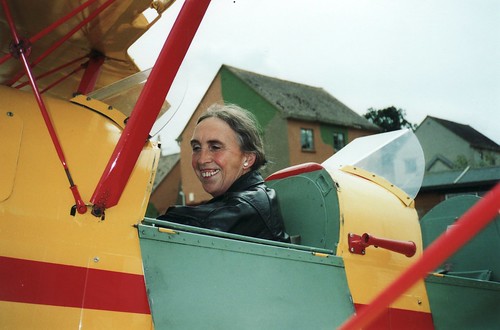In 1903, 4-6-0 locomotive number 98 emerged from Swindon works representing the first of his standard designs. It featured two outside cylinders with 10-inch piston valves and represented a maturing of ideas incorporated in 4-6-0 number 100 built the previous year. Two other prototypes for standard designs emerged in 1903, again with two outside cylinders and piston valves - a freight 2-8-0 locomotive number 97 which was the forerunner of the famous '28XX' class and a large-wheeled 2-6-2 tank number 99. Significantly, in a triumph of the foundrymans' art, in all three designs, one cylinder, its valve chest, associated internal passages and half the saddle to support a 'drumhead' smokebox were combined in a single casting. In each case, two castings bolted together on the centreline of the locomotive formed the complete 2-cylinder 'engine'.
Churchward had a cautious approach and these prototypes were intended to run for a couple of years to prove the soundness of the design before further orders were placed but motive power needs meant that a small-wheel version of the 2-6-2 tank, number 115, appeared in 1904 and its success in the West Country and Wales led to ten further locomotives (numbered 3101-3110) being built in Wolverhampton works in 1905-1906. Number 115 was eventually renumbered 4400 and the ten later locomotives 4401-4410.
Further experience suggested an increase in driving wheel diameter would be helpful and twenty more 'Light Prairies' were built at Wolverhampton with 4 feet 7½ inch diameter wheels, with more to follow built at Swindon. Various modifications were introduced to these popular engines - top feed, an extended smokebox, superheaters with boiler pressure raised from 180 p.s.i. to 200 p.s.i. and an extended coal bunker bringing the weight up to around 56 tons 13 cwt. Cylinders were 16½ x 24 inch.
Preserved locomotive 5542 of the '4575' class has proved popular with both visitors and crews on her various lisits to the Battlefield Line. The Wikipedia article on this locomotive says:-
[ 1] ‘A Pictorial Record of Great Western Engines’ by J. H. Russell (Oxford Publishing Company Vol. 1 & 2 1975: reprinted as one volume 1978) SBN 0 86093 02 6.
[ 2] ‘Great Western Steam’ by W. A. Tuplin (George Allen and Unwin 1958).
Related posts on other websites
GWR 4575 Class (Wikipedia)
In 1904 G J. Churchward introduced the 2-6-2T locomotive No 115 that was to be the forerunner of the 45xx class locomotives. The prototype, built at Swindon, very quickly proved most useful, and a further 10 examples were soon constructed at Wolverhampton locomotive works. The new locos sported copper topped chimneys and were originally numbered in the 31xx series but were re-numbered as the 44xx class. They were well equipped for use on the steep and twisting Great Western branch lines, particularly in and around the West Country. They were noted for excellent acceleration but with 4ft 1½in wheels their speed was restricted. Various modifications were soon introduced amongst other things, increased coal capacity, superheated boilers with increased pressure, at that time 180 p.s.i, and greater cylinder capacity.
Locomotive 5526 (also a member of the '4575' class) has proved equally popular on her visits to the Battlefield Line.
References[ 1] ‘A Pictorial Record of Great Western Engines’ by J. H. Russell (Oxford Publishing Company Vol. 1 & 2 1975: reprinted as one volume 1978) SBN 0 86093 02 6.
[ 2] ‘Great Western Steam’ by W. A. Tuplin (George Allen and Unwin 1958).
Related posts on other websites
GWR 4575 Class (Wikipedia)
GWR 4575 Class 5542 (Wikipedia)
Related posts on this website
The following posts talk about members of the '4575' class:-
'Cold Turkey Gala' at the Battlefield Line (5526 & 5542)
Preparing 5542 (part 2)
Related posts on this website
The following posts talk about members of the '4575' class:-
'Cold Turkey Gala' at the Battlefield Line (5526 & 5542)
Preparing 5542 (part 2)
3 Sep 2018
5542 at the Battlefield Line 28 Aug 2018
More Fish and Chips 15 Jul 2018
Santa Specials at the Battlefield Line 2017 19 Dec 2017
On the Footplate 5 Dec 2017
GWR 'Light Prairie' 5542 22 Aug 2010
My photograph albums
Where necessary, clicking on an image above will display an 'uncropped' view or, alternately, pictures may be selected, viewed or downloaded, in various sizes, from the albums listed:-
5526 GWR Locomotive
5542 GWR Locomotive
5521 GWR Locomotive
5553 G.W.R. Locomotive
4588 G.W.R. Locomotive
5542 at the Battlefield Line 28 Aug 2018
More Fish and Chips 15 Jul 2018
Santa Specials at the Battlefield Line 2017 19 Dec 2017
On the Footplate 5 Dec 2017
GWR 'Light Prairie' 5542 22 Aug 2010
My photograph albums
Where necessary, clicking on an image above will display an 'uncropped' view or, alternately, pictures may be selected, viewed or downloaded, in various sizes, from the albums listed:-
5526 GWR Locomotive
5542 GWR Locomotive
5521 GWR Locomotive
5553 G.W.R. Locomotive
4588 G.W.R. Locomotive








